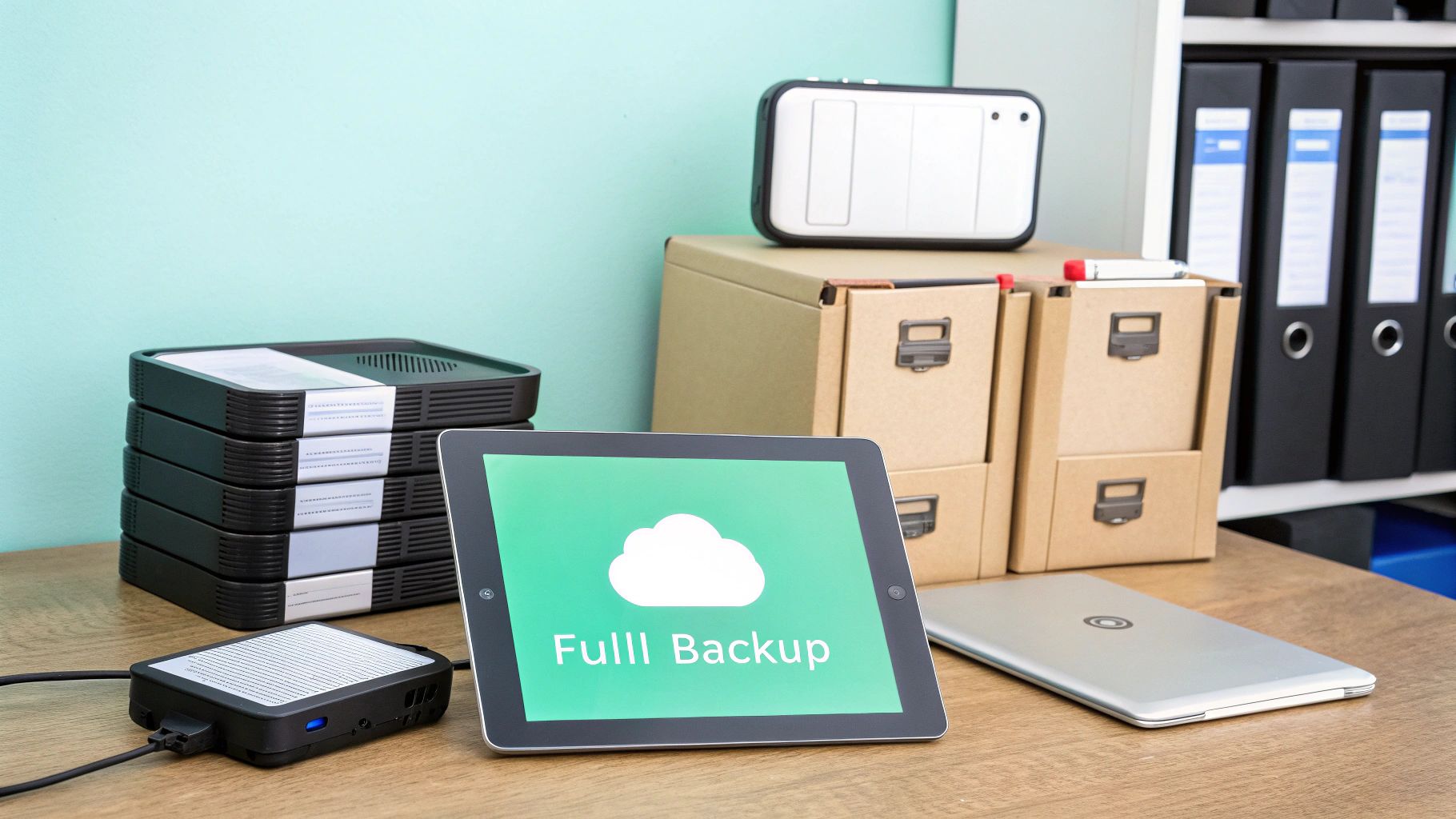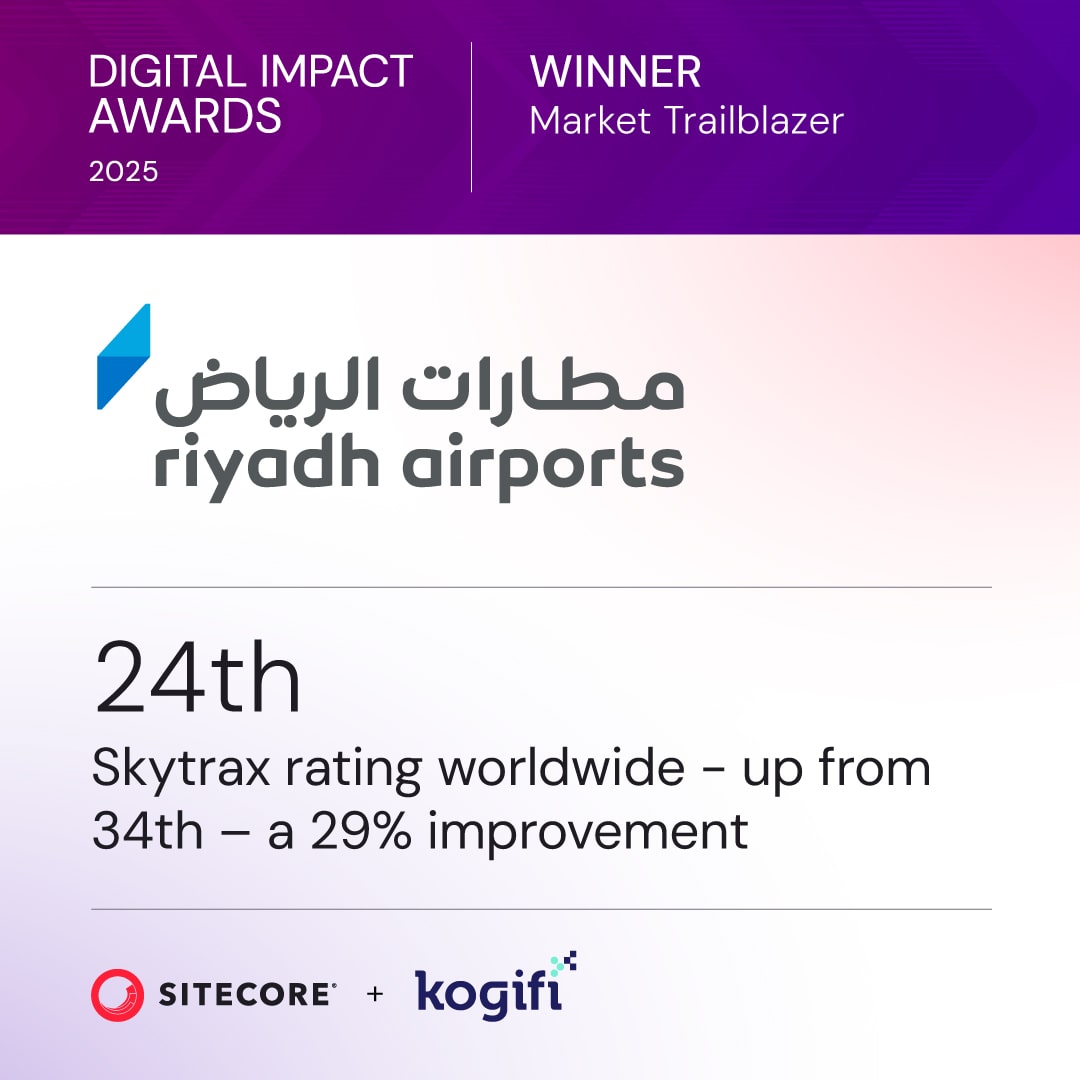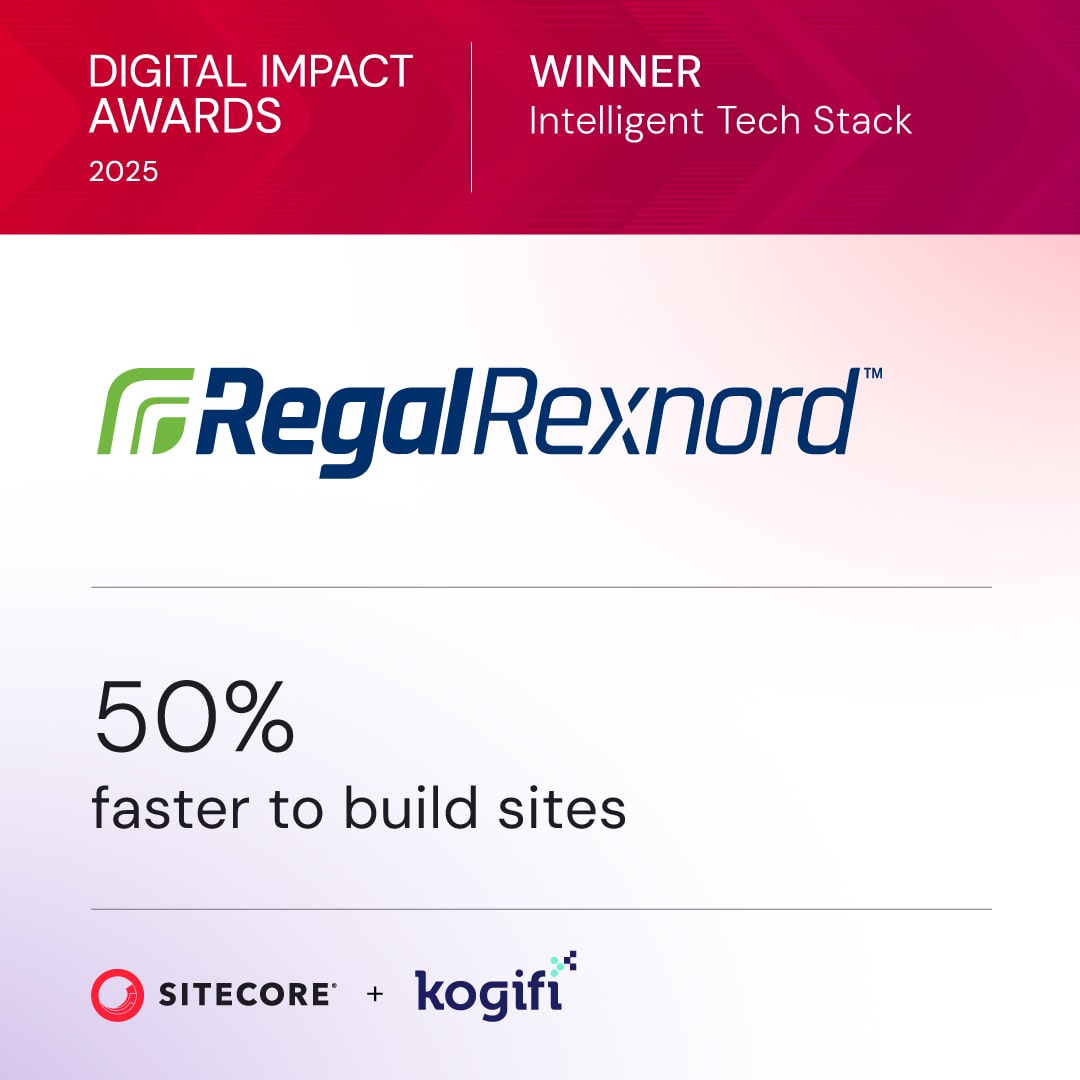Migrating your digital experience platform is more than a technical task; it's a critical business evolution. A flawed migration can lead to lost SEO rankings, broken user journeys, and significant revenue impact. This is especially true for complex enterprise ecosystems built on platforms like Sitecore and SharePoint, where data, integrations, and personalization rules are deeply interconnected. Without a meticulous plan, you risk jeopardizing years of accumulated digital equity and disrupting customer experiences at a crucial moment of transition. The stakes are simply too high for guesswork or a generic, one-size-fits-all approach.
This comprehensive website migration checklist moves beyond surface-level advice. It offers a detailed, step-by-step roadmap forged from years of experience in high-stakes DXP implementations. We'll provide actionable insights specifically tailored for Sitecore and SharePoint environments, ensuring your transition is not just successful, but a strategic upgrade that enhances performance, security, and user experience. To navigate the complexities of a DXP transition, having a clear and robust plan rooted in sound website project management principles is absolutely essential, as detailed in this practical guide to website project management.
By following this guide, you will gain a clear understanding of every critical stage, from pre-migration inventory and SEO planning to post-launch monitoring. We will cover:
- Pre-launch auditing and asset inventory.
- Technical SEO preservation, including redirects and canonicals.
- Data backup, security protocols, and rollback procedures.
- Launch day coordination and post-launch performance validation.
Follow this checklist to de-risk your project, empower your team, and lay a solid foundation for future digital growth.
1. Phase 1: Pre-Migration Discovery & Strategic Blueprint
Before moving a single file, a successful website migration checklist begins with a comprehensive discovery phase. This foundational step involves creating a strategic blueprint of your entire digital estate, which is far more than just a list of URLs. For a complex platform like Sitecore, this means a deep-dive audit of every component, content item, personalization rule, marketing automation plan, and custom integration.
Neglecting this exhaustive inventory is the primary cause of scope creep, unexpected technical hurdles, and budget overruns. The blueprint serves as the single source of truth for all stakeholders, clearly defining what will be migrated, what needs to be rebuilt, and what can be retired. A critical part of this initial discovery is performing an asset survey to comprehensively document all existing digital components and content. This meticulous planning prevents costly surprises during the execution phase.
Real-World Application
Consider a global manufacturer migrating from Sitecore 8.2 to Sitecore 10.3 XM. A pre-migration component audit revealed that nearly 40% of their legacy renderings were obsolete or unused. This insight dramatically reduced the development workload, saving them thousands of dollars and weeks of project time. Similarly, an enterprise moving from SharePoint 2013 to SharePoint Online used this phase to identify critical WSP solutions that were incompatible with the cloud, allowing them to proactively plan for re-architecting them as modern SharePoint Framework (SPFx) web parts.
Actionable Implementation Tips
- Automate Your Sitecore Inventory: Use the Sitecore PowerShell Extensions (SPE) to script the export of all data templates, renderings, content items, and user roles. For SharePoint, leverage PnP PowerShell scripts to list all web parts, features, and solution packages.
- Create a Content & Functionality Matrix: Map every old component to its new counterpart in the target system. For Sitecore, this means mapping legacy Web Forms for Marketers (WFFM) to the new Sitecore Forms, or old renderings to new SXA components.
- Audit for Value, Not Just Existence: Work directly with business units to determine which features and content are actively used and provide business value. This is the perfect opportunity to declutter and streamline the user experience.
- Leverage Expert Audits: For a faster, more thorough analysis, engage professional services. A specialized DXP audit can accelerate this discovery phase and uncover hidden dependencies you might otherwise miss. Explore our complete guide to a comprehensive website audit for more details.
2. Set Up Staging Environment and Test Migration Process
Attempting a website migration without a dedicated staging environment is like performing surgery blindfolded. This critical phase involves creating an isolated, non-production replica of your target environment where the entire migration process can be repeatedly rehearsed. For complex DXP migrations, such as upgrading Sitecore versions or moving from on-premise SharePoint to SharePoint Online, this environment is non-negotiable. It allows your team to validate every script, data transfer, and configuration change without any risk to the live website.
This rehearsal is a cornerstone of any effective website migration checklist, as it uncovers unforeseen technical issues, timing discrepancies, and integration failures before they can impact users. A staging environment isn't just a "test server"; it's a full-scale dress rehearsal for the main event, ensuring your migration strategy is robust, predictable, and successful. The goal is to make the final "go-live" migration a routine, documented procedure, not a frantic, unpredictable scramble.

Real-World Application
A financial services firm migrating a massive SharePoint 2016 farm to SharePoint Online used a staging environment to identify critical throttling limits within Microsoft 365. Their initial migration plan would have failed within hours. By rehearsing with realistic data volumes, they were able to adjust their migration scripts to work within Microsoft's API limits, ensuring a smooth final cutover. Similarly, a retail client upgrading from Sitecore 9 to 10.3 leveraged a staging setup to discover that a key custom xDB integration failed on the new architecture, giving them the necessary time to re-engineer the connector without derailing the project timeline.
Actionable Implementation Tips
- Replicate with Infrastructure-as-Code (IaC): Use tools like Azure Bicep, ARM templates, or Terraform to script the creation of your staging environment. This is especially critical for modern Sitecore XM Cloud or PaaS deployments to guarantee it is an exact, consistent replica of production.
- Run Multiple Migration Drills: The first test run will almost certainly fail. Treat each rehearsal as an opportunity to refine and document your process. The goal is to develop a step-by-step playbook that your team can execute flawlessly on launch day.
- Test with Realistic Data Volumes: Migrating a few hundred content items is not the same as migrating millions. Use a recent backup of your production Master and Web databases in staging to accurately simulate migration times and identify performance bottlenecks.
- Validate External Integrations: Your Sitecore instance doesn't exist in a vacuum. Confirm that all third-party connections, from CRM systems like Salesforce to marketing automation platforms and payment gateways like Sitecore OrderCloud, function correctly in the new staging environment.
3. Perform Complete SEO Audit and Plan 301 Redirects
A website migration can be devastating for your hard-earned search engine rankings if not managed with precision. This critical step in any website migration checklist involves a forensic analysis of your current SEO performance, followed by the creation of a comprehensive 301 redirect map. This ensures that every drop of SEO equity, from keyword rankings to valuable backlinks, is transferred from your old URLs to your new ones, preventing a catastrophic loss of organic traffic.
For enterprise platforms like Sitecore, where content can be served from multiple locations and URL structures can be complex (e.g., multi-site, multi-language setups), this audit is non-negotiable. Neglecting this step is like moving to a new address without telling the post office; visitors and search engines will get lost, and your digital presence will suffer. A meticulous redirect strategy is your insurance policy against losing years of SEO investment.

Real-World Application
Consider a financial institution migrating from a legacy CMS to Sitecore XP. An initial SEO audit revealed hundreds of high-authority backlinks pointing to deep-level product pages and blog posts. By meticulously mapping every old URL to its new Sitecore counterpart and implementing server-level 301 redirects, they not only preserved their rankings but saw a 15% uplift in organic traffic post-launch. The seamless transition ensured that search engines understood the new site structure immediately, rewarding them for the improved user experience on the new platform.
Actionable Implementation Tips
- Crawl and Catalog Everything: Use tools like Screaming Frog to crawl your entire existing site. Export all URLs, title tags, meta descriptions, and header status codes to build your baseline.
- Create a Redirect Mapping Spreadsheet: This is your migration bible. Create a two-column spreadsheet: Column A for every old URL and Column B for the corresponding new URL. This map will be used to implement the redirects.
- Leverage Sitecore Redirect Management: For Sitecore-to-Sitecore migrations or moves to the platform, utilize built-in tools like the Sitecore Redirect Manager module or SXA's redirect functionality to manage redirects directly within the CMS, giving content editors control.
- Prioritize High-Value Pages: Pay special attention to pages that generate the most organic traffic, have the most backlinks, or drive the most conversions. Ensure these are mapped with 1:1 accuracy.
- Test Before and After: Use a redirect testing tool to validate your mapping file before launch. After launch, continuously monitor Google Search Console for 404 errors and crawl anomalies.
4. Backup All Data, Databases, and Files
This step in any website migration checklist is non-negotiable and serves as your ultimate safety net. It involves creating a complete, point-in-time snapshot of your entire digital ecosystem. For complex platforms like Sitecore, this means backing up not just the Master, Core, and Web databases, but also the Experience Database (xDB) collections, processing and reporting databases, and any custom databases for integrated modules.
Failing to secure a verified, restorable backup before initiating the migration is a high-risk gamble that can lead to catastrophic, irreversible data loss. This backup is your rollback plan, a one-click "undo" button that allows you to restore the original site to its exact pre-migration state should anything go wrong. It provides the confidence needed to proceed with a complex technical process, knowing that your digital assets are fully protected.

Real-World Application
A large financial services firm migrating their SharePoint 2016 intranet to SharePoint Online encountered a critical permissions error post-migration that locked out entire departments. Because they had taken complete SQL server backups of their content databases and virtual machine snapshots of their application servers, their IT team was able to immediately restore the legacy environment. Similarly, a Sitecore client upgrading from version 9.1 to 10.2 was able to swiftly revert to their backup after discovering a key custom integration failed on the new platform, preventing a prolonged and damaging outage of their public-facing website.
Actionable Implementation Tips
- Automate Platform-Specific Backups: For Sitecore, use the Sitecore PowerShell Extensions (SPE) or built-in package tools to create full-system backups. For SharePoint on-premises, leverage SQL Server Management Studio and Central Administration to schedule and execute complete farm backups.
- Verify Your Backups: A backup is useless if it cannot be restored. Always test your backup files by restoring them to a separate staging or development environment to confirm data integrity and functionality.
- Implement the 3-2-1 Rule: Maintain three copies of your data on two different types of media, with at least one copy stored offsite or in a different cloud region. This strategy protects against hardware failure, local disasters, and cyber threats.
- Document Everything: Create a detailed document outlining your backup locations, encryption keys, and step-by-step restoration procedures. This documentation is invaluable during a high-pressure recovery scenario. Explore our guide for more on database migration best practices.
5. Configure DNS Records and Domain Settings
The Domain Name System (DNS) is the phonebook of the internet, and configuring it correctly is the critical switch that directs traffic to your new website. This technical step involves updating your domain's records (A, CNAME, MX, TXT) to point from the old hosting environment to the new one. For complex enterprise platforms like Sitecore, this isn't just about changing an IP address; it involves coordinating changes for content delivery networks (CDNs), separate content delivery and management servers, and third-party integrations tied to your domain.
Failing to plan this step meticulously is the most common reason for a failed go-live. A misconfigured record can take your site completely offline, disrupt email services, and invalidate security certificates. A successful DNS cutover, a key part of any website migration checklist, is the final, irreversible step that makes your new platform accessible to the world. It requires precision, pre-flight checks, and a clear understanding of propagation times to ensure a seamless transition.
Real-World Application
Consider a financial services firm migrating its Sitecore XP instance to a new cloud infrastructure on Azure. Before the migration, their DNS strategy involved updating A records for their content delivery servers, CNAMEs for their CDN, and critical MX and TXT records for email deliverability and domain verification. Using a service like Azure DNS or Cloudflare, they lowered the Time-to-Live (TTL) values 48 hours prior to the cutover. This ensured that when the switch was made, the new IP addresses propagated quickly across the global internet, minimizing downtime to just a few minutes.
Actionable Implementation Tips
- Lower TTL Values in Advance: At least 24-48 hours before the migration, lower the TTL (Time-to-Live) on your key DNS records to a very short time (e.g., 300 seconds). This speeds up how quickly the changes propagate.
- Pre-Launch DNS Testing: Before touching your live records, use your local
hostsfile to point your domain to the new server's IP address. This allows you and your stakeholders to perform a final test of the new site on its actual domain. - Verify with DNS Checkers: Once you make the change, use tools like What's My DNS and MXToolbox to monitor the propagation of your new records from different locations around the world.
- Update Security & Email Records: Don't forget to update SPF, DKIM, and DMARC records. This is crucial for maintaining email deliverability, especially if using Sitecore's Email Experience Manager (EXM), and preventing your company's emails from being marked as spam after the migration.
6. Test and Verify All Forms, Integrations, and Functionality
A migration isn't complete until every interactive element performs flawlessly in the new environment. This critical phase involves end-to-end testing of every form, API integration, and piece of custom functionality. For complex DXPs like Sitecore, this means validating not just contact forms, but also connections to CRM systems, marketing automation platforms like Sitecore Connect for Salesforce Marketing Cloud, and any custom xDB listeners or data exchange framework providers.
Simply confirming that a page loads is insufficient. This step within a comprehensive website migration checklist ensures that user actions trigger the correct backend processes, data is transferred accurately between systems, and the user experience remains seamless. Neglecting this validation can lead to lost leads, broken e-commerce transactions, and a catastrophic loss of user trust immediately post-launch.
Real-World Application
A global financial services firm migrating to Sitecore XP had a complex integration with their Dynamics 365 CRM for lead capture. During staging tests, they discovered that while the forms submitted without error, custom field mappings were misaligned due to an API version change. Catching this pre-launch prevented thousands of high-value leads from being improperly routed or lost. Similarly, a SharePoint Online migration for a large enterprise required rigorous testing of Power Automate flows that replaced legacy event receivers, ensuring document approval workflows continued to function as expected.
Actionable Implementation Tips
- Develop Detailed Test Cases: Create a comprehensive testing script that outlines every user action and expected outcome. For a Sitecore Form, this includes successful submission, validation error messages, and the corresponding contact data appearing correctly in xDB or the connected CRM.
- Test Integrations in Sandbox Mode: Use tools like Postman to test API endpoints directly. For Sitecore OrderCloud or Experience Commerce, always use provided test cards and sandbox credentials to simulate transactions without processing real payments.
- Validate Custom SharePoint Functionality: If migrating SharePoint solutions, thoroughly test any SharePoint Framework (SPFx) web parts, ensuring they correctly fetch data from the Microsoft Graph API or other external services.
- Verify Analytics and Tracking: Use browser developer tools or tag management assistants to confirm that analytics tags (like Google Analytics 4) and marketing pixels are firing correctly on key pages and conversion events, and that Sitecore personalization rules are triggering as expected.
7. Monitor Performance Metrics and Set Up Alerting
A website migration doesn’t end the moment the new site goes live; its success is measured by its ongoing performance. Establishing robust monitoring and alerting is a critical step in any comprehensive website migration checklist. This involves setting pre-migration performance baselines and then continuously tracking key metrics like uptime, page load speed, error rates, and Core Web Vitals post-launch. For platforms like Sitecore, this means monitoring both frontend user experience and backend Content Delivery (CD) server performance.
Failing to monitor performance proactively means you are blind to the user experience regressions that often follow a migration. Slow load times, increased 404 errors, or degraded server response times can quickly erode user trust and negate any SEO gains. Proactive alerting allows your technical team to identify and resolve issues, often before users or stakeholders even notice, ensuring the migration delivers on its promised improvements.
Real-World Application
A large e-commerce brand migrating to Sitecore Experience Commerce (XC) used New Relic to establish detailed pre-migration performance benchmarks. Post-launch, their automated alerts immediately flagged a memory leak in a custom-built API integration that was causing slow checkout times. The team was able to deploy a hotfix within hours, preventing a significant loss in revenue. Similarly, a university migrating its SharePoint intranet tracked user interaction times and document load speeds, ensuring the new SharePoint Online environment met their strict internal SLAs for employee productivity.
Actionable Implementation Tips
- Establish a Pre-Migration Baseline: Use tools like GTmetrix or Google PageSpeed Insights to capture detailed performance data of your key pages (homepage, product pages, contact forms) on the old site. This data is your benchmark for success.
- Implement Synthetic and Real User Monitoring (RUM): Synthetic monitoring tools ping your site 24/7 to check for uptime and basic performance, while RUM tools (like those integrated into Datadog or New Relic) track the actual experience of your visitors, providing invaluable real-world data.
- Configure Granular Sitecore Alerts: Set up alerts for specific thresholds. For example, trigger an alert if the server response time exceeds 500ms, the Core Web Vitals LCP score drops below "Good," or the 404-error rate spikes by more than 5% in an hour.
- Monitor Backend Health: For Sitecore, monitor the health of your Content Delivery (CD) and Content Management (CM) instances, including CPU usage, memory consumption, and Solr/Azure Search health. You can explore a variety of powerful tools for infrastructure monitoring to get this level of visibility.
8. Create Communication Plan and Notify Stakeholders
Technical execution is only half the battle in a successful website migration; the other half is managing the human element. A structured communication plan ensures that every stakeholder, from internal teams to end-users and customers, is kept informed, prepared, and supported throughout the transition. For platforms like Sitecore, where content authors, marketers, and administrators have specific workflows, this communication is mission-critical to prevent operational disruption.
Failing to communicate effectively can lead to confusion, a surge in support tickets, and a loss of trust. A proactive plan manages expectations regarding potential downtime, outlines changes to URLs or login procedures, and provides clear channels for support. This step is a cornerstone of any comprehensive website migration checklist, transforming a potentially chaotic technical event into a smooth, well-managed business transition.
Real-World Application
Consider a financial institution migrating its customer portal from an on-premise SharePoint 2016 to SharePoint Online. A detailed communication plan was essential. They initiated a multi-channel campaign weeks in advance, using email, on-site banners, and direct mail to inform users about the upcoming change, new login URLs, and enhanced features. This clear, consistent messaging minimized user friction and reduced help desk calls by over 60% during the critical post-launch week, ensuring a positive customer experience.
Actionable Implementation Tips
- Segment Your Audiences: Tailor your messages for different groups. Your internal Sitecore content editors need different information (e.g., changes to the Experience Editor, new publishing workflows) than your external customers or partners.
- Establish a Communication Cadence: Start with an initial announcement 4-6 weeks out, followed by reminders at the two-week, one-week, and 24-hour marks. Use a mix of channels like email, website banners, and social media.
- Prepare Your Support Teams: Equip your customer service and IT help desk with detailed FAQs, scripts, and a direct line to the migration team. They are your front line for managing user queries and issues.
- Create a Central Status Hub: Set up a simple status page or a dedicated section on your site to provide real-time updates during the migration window. This centralizes information and reduces repetitive inquiries.
9. Document and Test Rollback Procedure
Even the most meticulously planned migration can encounter unforeseen critical failures at launch. This is why a documented and tested rollback procedure is an non-negotiable part of any professional website migration checklist. It's your project's insurance policy, providing a clear, step-by-step guide to rapidly revert to the stable, pre-migration state. This plan minimizes downtime, protects revenue, and preserves user trust if a catastrophic issue arises.
For complex DXP migrations, such as moving from an on-premise SharePoint farm to SharePoint Online or upgrading Sitecore versions, a rollback isn't just about restoring a database. It involves a coordinated reversal of DNS changes, application pool settings, and potentially integrated services. Failing to prepare for this possibility transforms a recoverable problem into a business-wide crisis, derailing timelines and eroding stakeholder confidence.
Real-World Application
Consider an enterprise upgrading a heavily customized Sitecore Commerce environment. Post-launch, they discover a critical bug in the payment gateway integration that was missed in staging. Because they had a tested rollback plan, they were able to revert DNS, switch the application pools back to the old servers, and restore the pre-launch database within 30 minutes. This swift action prevented significant revenue loss and allowed the development team to address the bug without the immense pressure of a live-site failure.
Actionable Implementation Tips
- Script the Reversal: For both Sitecore and SharePoint, automate as much of the rollback as possible using PowerShell. This includes scripts to point DNS records back, restore databases from their final pre-launch backup, and re-enable the old web applications.
- Establish Clear Go/No-Go Criteria: Define the specific, measurable thresholds that would trigger a rollback. This could be a non-functional checkout process, a critical content authoring failure in the Sitecore Experience Editor, or a certain percentage of 500 errors. This removes emotional decision-making in a high-stress situation.
- Conduct a Full Rollback Drill: Don't just talk about the plan, execute it. At least once before the migration day, perform a full rollback drill in your staging environment to identify any gaps in the procedure and accurately time the process.
- Maintain Dual Infrastructure: Keep the old server infrastructure running and ready for at least 24-48 hours post-migration. The cost of running parallel environments for a short period is minuscule compared to the potential cost of extended downtime.
10. Schedule Migration Window and Coordinate Team Execution
Even the most technically sound migration plan can fail due to poor timing and uncoordinated execution. This phase of the website migration checklist is dedicated to orchestrating the human element of the project. It involves strategically selecting a go-live window that minimizes business disruption and ensuring that every team member, from the Sitecore developer to the marketing content approver, knows their exact role and is ready to act.
Neglecting this step introduces unnecessary risk and chaos during the critical launch period. A well-defined execution plan with clear roles, responsibilities, and communication channels acts as a runbook, transforming a potentially stressful event into a controlled, predictable process. This is particularly crucial for complex DXP environments where database deployments, content synchronization, and CDN cache clearing must happen in a precise sequence.
Real-World Application
Consider a financial services firm migrating its client portal from a legacy CMS to Sitecore XM Cloud. The team scheduled the go-live for a Tuesday morning, a low-traffic period, and created a detailed runbook with minute-by-minute tasks assigned to specific individuals. When an unexpected API authentication issue arose, the pre-defined escalation path and dedicated communication channel (a Microsoft Teams war room) allowed the lead developer and security officer to resolve it within 15 minutes, preventing any significant delay or user impact.
Actionable Implementation Tips
- Define and Document All Roles: Clearly outline responsibilities for the Project Lead, Technical Execution Team (developers, DBAs), QA Testers, Communications Lead (to update stakeholders), and Monitoring Team.
- Create a Detailed Execution Runbook: Document every single step of the migration process, including pre-flight checks, DNS changes, data scripts, post-launch validation tasks, and rollback procedures. Assign each step to a specific role.
- Choose a Low-Impact Window: Avoid Fridays, weekends, and holidays. The ideal time is often a Tuesday or Wednesday morning before peak traffic begins, ensuring the full team is available to address any issues.
- Establish a "War Room" Communication Channel: Use a dedicated Slack channel or Microsoft Teams meeting for real-time updates, troubleshooting, and go/no-go decisions during the migration window.
- Plan for Contingencies: Build a 50% time buffer into your schedule for unexpected issues. A well-orchestrated schedule is fundamental to success; explore our guide on how to minimize downtime in Sitecore migrations for deeper insights.
10-Step Website Migration Comparison
Your Migration Is a New Beginning, Not Just an Endpoint
Navigating the intricate landscape of a website migration can feel like a marathon. From the initial inventory of all digital assets and stakeholder communications to the final DNS switch and performance monitoring, each step is critical. Successfully completing this journey is a monumental achievement, but it's crucial to recognize that the launch is not the finish line. Instead, it marks the beginning of a new chapter for your digital presence, a transition from a project-based mindset to a cycle of continuous optimization and growth.
This comprehensive website migration checklist was designed to be your roadmap, transforming a potentially chaotic process into a structured, manageable, and predictable series of actions. By meticulously planning your 301 redirects, validating technical SEO elements like canonical and hreflang tags, and establishing a robust post-launch monitoring plan, you’ve done more than just relocate your website. You’ve built a resilient foundation engineered for future success.
From Technical Execution to Strategic Value
The true measure of a successful migration isn’t just that the new site is live and functional. The real victory lies in what comes next. Did you preserve, or even improve, your organic search rankings? Is the new platform delivering a faster, more secure, and more intuitive user experience? Are you now positioned to leverage the advanced capabilities you migrated for?
For organizations moving to sophisticated Digital Experience Platforms (DXPs) like Sitecore, the post-migration phase is where the strategic value is truly unlocked. Your new environment is a powerful engine for personalization, A/B testing, and omnichannel content delivery.
- Activate Personalization: Begin segmenting your audiences and creating personalized content journeys that were impossible on your old platform using Sitecore's rules engine.
- Leverage Analytics: Use Sitecore's integrated analytics (xDB) to gain deeper insights into user behavior and identify opportunities for conversion rate optimization.
- Optimize Content Workflows: For those on SharePoint, focus on streamlining internal collaboration and document management to enhance productivity and content governance.
The key takeaway is this: the meticulous effort you invested in the migration process directly enables these high-value, business-driving activities. A clean, technically sound migration prevents you from spending the next six months fixing broken links and fighting SEO fires, freeing up your resources to focus on innovation and achieving your core business objectives.
Key Insight: A successful migration is not defined by the absence of problems at launch, but by the presence of new opportunities for growth. Your checklist is the tool that ensures you can capitalize on those opportunities immediately.
Embracing the Cycle of Continuous Improvement
Your new website is not a static brochure; it is a dynamic, living asset. The data you begin collecting from day one is invaluable. Use tools like Google Analytics, Search Console, and Sitecore's Experience Analytics dashboards to monitor key performance indicators relentlessly. Look for shifts in user engagement, changes in keyword rankings, and fluctuations in conversion rates. Each data point is a clue that can guide your post-launch optimization strategy.
This is where the real work of digital excellence begins. The stability and performance you secured through your migration checklist now serve as the launchpad for ongoing enhancements. Whether it's refining your component library in Sitecore, improving search functionality in SharePoint, or simply A/B testing a new call-to-action, you are now in a position to build upon a solid foundation. You've moved beyond the technical necessities of the migration and into the strategic pursuit of a superior digital experience. Congratulations on reaching the starting line of what’s next.
Navigating the complexities of a major DXP migration, especially with platforms like Sitecore or SharePoint, requires deep expertise. If you're looking for a partner to ensure every item on your website migration checklist is executed flawlessly, the specialists at Kogifi are ready to guide you. We transform complex technical migrations into strategic business advantages, ensuring your new platform delivers immediate and lasting value.








































